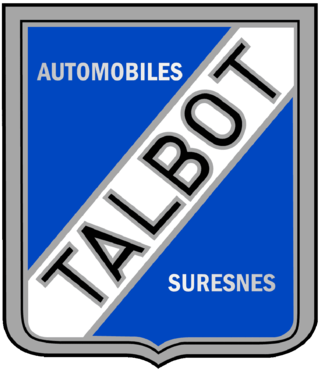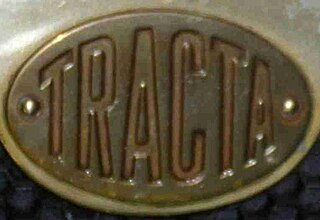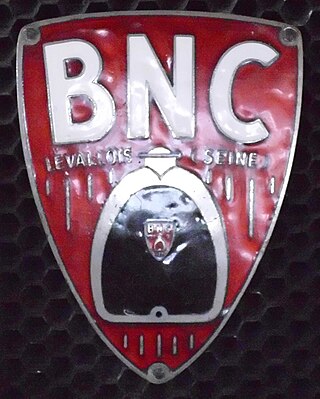 |
The Georges Irat was a French automobile manufactured by engine builder Georges Irat from 1921 to 1953.
Contents

 |
The Georges Irat was a French automobile manufactured by engine builder Georges Irat from 1921 to 1953.


The company's first product was an ohv 1990cc four-cylinder car designed by Maurice Gaultier who had been with Delage. This was joined in 1926 by a 2985 cc six-cylinder. The company turned to producing Lycoming powered models in 1929, both sixes and eights; this was also the year in which they moved from Chatou to Neuilly. A small car with 1086 cc four-cylinder engine and designed by George's son Michel, was added to the range in 1929 but sales of this and the large cars were poor resulting in a financial crisis.
The manufacturer was partially taken over by Godefroy et Levecque, makers of the Ruby engine, in 1934, consequently moving to that company's works in Levallois. Here they made two front-wheel-drive sporting roadsters, one with an 1100 cc Ruby and the other with a six-cylinder 2450 cc Lycoming engine. The smaller car sold well but there were few takers for the six. In 1938 a new sports car with a 1911 cc engine produced by Citroën with independent suspension using rubber springing on all wheels was announced but war broke out after about 200 had been made.
After the outbreak of war, Georges Irat was among the first auto-makers to focus on electric cars, [1] there being diminishing quantities of oil based motor-fuel available for civilian use, especially after the German invasion in May/June 1940. An all-new electric car was designed during Summer 1940 and developed rapidly in order to be ready for public launch at the Lyon Fair during the autumn of 1941. [1] The little car was designed to be as light-weight as possible and the electric motor had a number of ingenious features. The vehicle had a top speed of 30–35 km/h (roughly 20 mph) and the lead battery provided for a range of 90-100 kilometres (nearly 60 miles) between charges. [1] Both a small 2-seater cabriolet and a 2-seater mini-van were produced, although most of the rear portion of the car and indeed of the van was permanently occupied by the electric motor and batteries. [1] The first few cars were produced for use by Georges Irat employees, but small batches of the cars were built for sale via an exclusive deal with a car dealer on the Rue de Passy on the western side of central Paris. [1] After the end of 1942 significant levels of auto-production were no longer possible due to the non-availability of materials and labour for civilian production. Production of electric cars did not restart when peace returned in 1945.

A prototype with an 1100 cc flat four engine driving the front wheels was shown at the October 1946 Paris Salon. It reappeared at the 1947 Motor Show looking broadly similar but the front panels were slightly reworked and the headlights were covered over with an extra layer of glass in order to present a smoother profile. [2] Under the bonnet/hood the engine had now been replaced by a 1996 cc 4-cylinder in-line unit featuring a twin overhead camshaft and driving, now, the rear wheels via a more conventional transmission. [2] At this time the French auto-industry was subject to extensive government intervention, and in this dirigiste context Georges Irat thought that the larger-engined car might be classified by the government, which controlled supplies of materials necessary for auto-production, as an "exceptional car reserved in the first instance for export" [2] [3] However, the car never entered production even though it re-appeared at the 1949 show.
In 1950 Georges Irat announced the VdB or "Voiture du Bled" made by a new company, Société Chérifienne George Irat in Casablanca, Morocco. This was a jeep-like three-seat vehicle powered by a rear-mounted Panhard engine. Only a few were made up to 1953. The engine was originally of 610 cc and 28 PS (21 kW), which meant a top speed of 80 km/h (50 mph). It could climb a 40% grade and ford a 60 cm (24 in) deep stream. [4] The vehicle later received updated bodywork, and the car displayed at the 1953 Paris Show had a 745 cc version of the Panhard engine, producing 33 PS (24 kW). With 80 L (21 US gal) and 40 L (11 US gal) in reserve, the effective range of the VdB was 1,500 km (930 mi). It was rear-wheel drive only, but had a locking differential and a low gear transfer case for its three-speed gearbox. [4]

Panhard was a French motor vehicle manufacturer that began as one of the first makers of automobiles. It was a manufacturer of light tactical and military vehicles. Its final incarnation, now owned by Renault Trucks Defense, was formed by the acquisition of Panhard by Auverland in 2005, and then by Renault in 2012. In 2018 Renault Trucks Defense, ACMAT and Panhard combined under a single brand, Arquus.

Brasier was a French automobile manufacturer, based in the Paris conurbation, and active between 1905 and 1930. The firm began as Richard-Brasier in 1902, and became known as Chaigneau-Brasier in 1926.

Unic was a French manufacturer founded in 1905, and active as an automobile producer until July 1938. After this the company continued to produce commercial vehicles, retaining its independence for a further fourteen years before being purchased in 1952 by Henri Pigozzi, who was keen to develop Unic as a commercial vehicle arm of the then flourishing Simca business.

Talbot-Lago was a French automobile manufacturer based in Suresnes, Hauts de Seine, outside Paris. The company was owned and managed by Antonio Lago, an Italian engineer that acquired rights to the Talbot brand name after the demise of Darracq London's subsidiary Automobiles Talbot France in 1936.

The Peugeot 203 is a small family car which was produced by the French car manufacturer Peugeot between 1948 and 1960.
Buchet was a French motorcycle and automobile manufacturer between 1899 and 1930.

Tracta was a French car maker based in Asnières, Seine, that was active between 1926 and 1934. They were pioneers of front-wheel-drive vehicles.

Bollack, Netter, et Cie(French: Bollack Netter et compagnie), more commonly known as B.N.C., was a small French automobile company in Levallois-Perret, situated on Avenue de Paris 39.
Lambert was a French automobile manufacturer established by Germain Lambert in 1926 at Mâcon. In commercial terms, it never progressed beyond marginal viability and it withdrew from auto-making towards the end of 1953.

Marathon was a French automobile manufacturer established by a group of engineers under the leadership of a rally enthusiast called Bernard Denis. Prototypes for a lightweight sports coupé were presented at various motor shows starting with the 1951 Frankfurt Motor Show and the cars were produced between 1953 and 1955.

Georges Mochet began to produce cycle-cars at his, now-demolished, premises at 68, Rue Roque-de-Fillol at Puteaux in approximately 1946 and by about 1952 had progressed to more modern looking two seater micro-cars and powered two-wheelers. In 1958, with approximately 3,000 vehicles manufactured, production ended.
Boitel is a former French automaker.

The Panhard et Levassor Dynamic is a large car introduced by the French auto-maker Panhard et Levassor as a replacement for the company’s CS model at the Paris Motor Show in October 1936.

The Delage D6 is a six-cylinder luxury car produced by the manufacturer between 1930 and 1940 and again, after the war, between 1946 and 1953. For much of this time it was the company’s principal or, from 1946, only model.

Sima Violet was a French manufacturer of cyclecars between 1924 and 1929.

Majola was a French producer of engines and automobiles, established in 1908 and producing automobiles from 1911 till 1928.

Messier was a French automobile manufacturer, based at Montrouge, on the southern edge of Paris, from 1925 till 1931.

The Renault Vivasport was a 6-cylinder engined executive automobile introduced by Renault in September 1933 and produced till April 1935. A larger engined version was produced between December 1934 and February 1938. As with many Renaults during the 1930s, type changes as well as small often cosmetic facelifts and upgrades appeared frequently.

The Société Bel Motors was a French microcar (automobile) manufacturer established at Les Sables-d'Olonne in 1976 by Jean Bellier. The cars used the name Véloto which reflected aspects of their light-weight design, notably in respect of the spoked wheels which would not have looked out of place on a bicycle.

The Panhard CS is a luxury car, most commonly sold with a four-door sedan/saloon body, introduced by Panhard & Levassor at the end of 1929 for the 1930 model year. It was presented as a smaller companion model to the 8-cylinder Panhard DS model. Publicity of the time indicated the "S" in the name stood for "surbaissées"